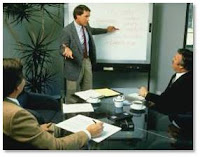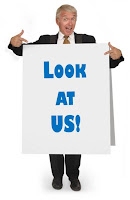 Clients hire you because they have needs. To provide great service, you must accurately understand your client's needs. So how would you rate your skill in uncovering needs?
Clients hire you because they have needs. To provide great service, you must accurately understand your client's needs. So how would you rate your skill in uncovering needs?Evidence suggests that professional service providers aren't as good at this as we'd like to think. A recent study by RainToday.com found that the second most common problem that clients reported when buying professional services was that the seller did not understand their needs (30% of respondents). The most common problem (at 38%) is related: "The seller did not listen to me."
My experience with clients corroborates these findings. Not only does our lack of insight into client needs undermine our sales efforts, it compromises our ability to serve the client after the sale. Most service problems I have encountered are primarily caused by not adequately understanding the client's expectations. Many technical failures can also be traced to this same shortcoming.
So how can you do a better job uncovering the client's real needs? I'm going to devote the next few blog posts to answering that question. Let me start by suggesting that you should consider the client's needs at three basic levels:

Technical needs. Meeting technical needs is obviously the focus of your business. That's the strength of your firm, where your experience and expertise lies, and the realm in which your staff is most comfortable. When clients are looking for your help, they tend to define their needs in technical terms. But that tendency, in my opinion, is more a function of how they view A/E firms rather than how they view their real needs.
Clients generally see A/E firms as technical specialists. But more often than not it is the nontechnical aspects of a project that are most important to the client. You are able to deliver greater value when you uncover and address the next two levels of needs.
Strategic needs. These are needs that impact the overall success of the client organization. This includes political, financial, operational, and competitive concerns. Here's an important point to keep in mind: Your projects are almost always driven by strategic needs. They form the crucial "why" behind what your firm does. Failing to uncover strategic needs limits the value of the solutions you deliver.
Have you ever wondered why other professional service firms can command much higher fees than the typical A/E firm? I believe the most important difference is that most other professional firms--such as law, accounting, management consulting, and marketing firms--focus on meeting their clients' strategic needs. We focus on technical needs, often without making the connection to the strategic drivers that make our projects important.
Linking your technical solutions to meeting strategic needs can be a key differentiator. Many A/E firms talk about helping their clients succeed. But most don't seem to understand what that really entails. It requires providing a more comprehensive mix of business and technical insight than most engineers and architects tend to offer. Don't overlook your client's strategic needs.
Personal needs. Clients are people, not agencies, companies, or departments. The people involved in the buying decision--and the people you serve after the sale--bring their own personal wants and expectations to the transaction. Ignore them at your own risk. Yet firms often do.
Personal needs can cover the spectrum of the two levels discussed above, but they go further. Individual buyers hold personal perspectives on the strategic drivers behind a project. They may prioritize certain technical issues, especially if they have a technical background. But ultimately there's an element of self-interest involved. Every individual buyer, either consciously or subconsciously, is asking: What's in it for me?
If you've followed this blog, you know I stress delivering a great customer experience as integral to delivering a great project. Superior service (i.e., a great customer experience) is perceived at the personal level. Thus one of the most important aspects of uncovering client needs is discovering individual expectations with regard to the working relationship. Few of your competitors are looking at this during the sales process. You can step into that gap and create an advantage.
Meeting these three levels of client needs should be a point of emphasis at every stage of your interaction with the client--sales, proposal, interview, negotiation, project planning, project delivery. Of course, you must first uncover needs at each level, which involves asking the right questions in the right way. That will be the focus of the next couple of posts.








